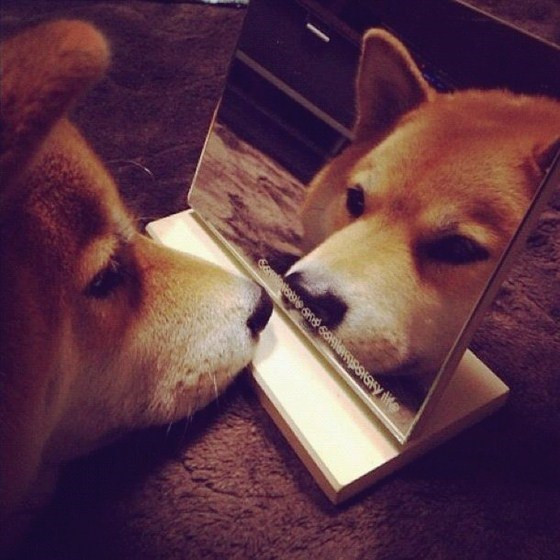Seeing a photo of himself with his eyebrows suddenly dyed red, 4 chimpanzees were surprised, reacting like humans when they fell into the same situation.
For decades, scientists have tested the intelligence of animals by observing whether they can recognize themselves in a mirror.
In 1970, psychologist Gordon Gallup Jr anesthetized four chimpanzees and dyed their eyebrows red. When these chimps get caught in the mirror, they react like humans in a similar situation.
They touch the eyebrows with their hands, touch these marks for a long time. Gallup concluded that chimpanzees were able to recognize his images. This is a sign that they possess a higher form of wisdom: the ability to identify with oneself.

A famous way to test an animal’s intelligence is the “mirror recognition” test. Specifically, animals are marked on a part of the body that they do not normally see and expose them to a mirror.
If they come by surprise and examine the mark on their own body and not in the mirror, and they impact those areas for longer than usual, they pass the test.
In addition to chimpanzees and a few species of orangutans, others like dolphins, Asian elephants, and European magpie also passed this test. We have to think of them as intelligent animals.
However, there are also many famous animals such as crows, parrots, gorillas, monkeys, dogs, and even young children who failed the test.
Many scientists believe the test to be biased because it is designed for animals that use vision as their primary sense.
Specifically for dogs, this breed lives primarily on smell. If you want to know if they can recognize each other or not, you have to put it in their world – the smell.
Marc Bekoff of the University of Colorado, USA, pioneered with his own dog, Jethro. Over the course of the five winters, he dug up layers of snow that Jethro and the other dogs had urinated and moved to new places.
He found that Jethro needed less time to smell his urine than other dogs. “He can’t recognize himself in the mirror but can fully recognize its scent,” says Bekoff.
Inspired by this experience, Horowitz conducted a larger and more comprehensive study. She recruited 36 volunteers in New York City and let their dogs distinguish each pair of boxes.
Both contain a few drops of the dog’s urine, but a box is added with a different scent – which acts like a red spot on the animals’ heads in the mirror experiment.
As a result, dogs spend more time smelling the box that smells the most mixed up.

Horowitz repeated the experiment with 12 new dogs. This time, she changed the box to add a strange smell by making their urine more neutral. And again, these dogs spend more time contemplating other impurities.
“For me, it’s an interesting find, similar to the story of monkeys looking at red markings on their heads,” Horowitz said.
“This study shows that how we ask questions about an animal’s intelligence is just as important as the question we ask,” commented Moniquie Udell, canine intelligence researcher at State University of Oregon.
“In many cases, getting the dog to do exercises specially designed for chimpanzees is like having a native English test his knowledge in a language he has not yet learned,” she added. .


